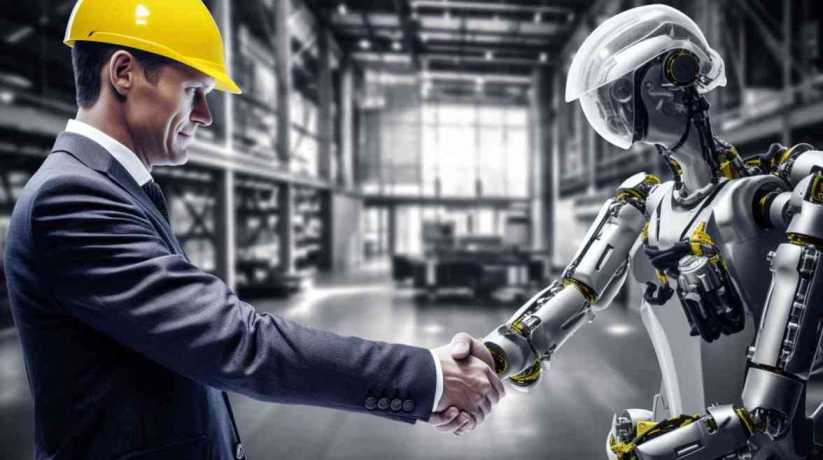


Explore how digital transformation is reshaping the Engineering-and-Manufacturing industry through AI, IoT, robotics, cloud systems, and smart automation.
The engineering and manufacturing industry is at the heart of a global industrial revolution fueled by digital intelligence, automation, and smart technologies. This sector, once reliant on manual operations and fixed production lines, is now evolving into a complex and connected ecosystem driven by data, robotics, and intelligent computing.
Today’s manufacturing era, often called Industry 4.0, has allowed companies to integrate AI, IoT, robotics, cloud platforms, digital twins, computer vision, and advanced analytics into essential engineering workflows. This transformation goes beyond just modernizing machines; it has changed how products are designed, produced, operated, and maintained.
As businesses move toward a human-focused Industry 5.0, smooth collaboration between people and smart systems is shaping the future of industry.
Evolution of the Engineering and Manufacturing Industry
The path of manufacturing innovation can be divided into several phases:
| Industrial Phase | Key Features | Technology Used |
| — | — | — |
| Industry 1.0 | Mechanization | Steam engines, manual labor |
| Industry 2.0 | Mass Production | Assembly lines, electricity |
| Industry 3.0 | Automation | Computers, electronics |
| Industry 4.0 | Digital & Smart Automation | AI, IoT, cloud, robotics |
| Industry 5.0 (Emerging) | Human-machine collaboration, sustainability | Collaborative robotics, green tech |
The engineering and manufacturing industry now functions in a digitally advanced environment powered by automation, connectivity, and real-time insights, ultimately improving precision, productivity, and product reliability.
Artificial Intelligence & Machine Learning
AI provides predictive intelligence across engineering and shop-floor operations. From automated defect detection to demand forecasting, machine learning models help industries make:
– Faster decisions
– Accurate quality assessments
– Optimized production plans
– Automated resource allocation
AI-based image recognition tools also aid precision engineering by spotting component errors not visible to the human eye.
Industrial IoT devices link machines, sensors, systems, and human operators, allowing for real-time monitoring and predictive maintenance. Key benefits include:
– Early detection of machine failures
– Reduced downtime and repair costs
– Real-time asset tracking and energy monitoring
– Connected manufacturing floors
Smart factories boost productivity while enhancing equipment reliability.
Modern factories use industrial robots and cobots (collaborative robots) for tasks like:
– Welding and assembly
– Material handling
– Packaging and inspection
– Precision cutting and machining
Robotics improves consistency and safety while allowing skilled workers to focus on innovation and strategic tasks.
Cloud technology provides seamless design, collaboration, and access to manufacturing data across global teams. Benefits include:
– Centralized digital product models
– Remote collaboration between design and production units
– Quick integration of updates and engineering changes
– Secure data storage and process automation
Cloud-enabled Product Lifecycle Management (PLM) ensures efficiency from design to delivery.
AR and VR systems create immersive engineering environments and enhance:
– Remote maintenance
– Digital prototyping
– Worker training simulations
– Real-time assembly guidance
Engineers can visualize complex systems before fabrication, reducing rework and improving accuracy.
Data is now the most important asset in engineering decision-making. Industrial analytics helps with:
– Tracking real-time operational metrics
– Predicting component failures
– Optimizing energy usage
– Enhancing quality checkpoints
– Supporting supply chain visibility
By using data intelligence, factories can create closed-loop automation systems for better performance.
Technology partners such as InnovationM support digital progress in the engineering and manufacturing sector by developing systems that promote automation and smart intelligence. Their work includes:
– Industrial IoT applications
– Cloud-based monitoring systems
– AI-driven predictive analytics
– Real-time dashboards for equipment tracking
– Secure data engineering infrastructure
Such contributions help industries speed up their digital adoption and modernize traditional environments.
Digital transformation brings clear improvements across operations:
| Area | Transformation | Outcome |
| — | — | — |
| Production | Automation, robotics | Faster and more efficient manufacturing |
| Quality | AI-enabled inspection | Zero-defect precision manufacturing |
| Maintenance | Predictive monitoring | Reduced machine downtime |
| Supply Chain | IoT and analytics | Transparent and efficient logistics |
| Workforce | AR/VR and training | Skilled and empowered workforce |
These changes not only increase output but also help meet global quality and regulatory standards.
Industry 5.0 focuses on collaboration between advanced automation and human creativity. Instead of replacing workers, technology supports workforce innovation, safety, and productivity. Key elements include:
– Human-robot collaboration
– Personalized manufacturing
– Green and sustainable production
– Cyber-secure infrastructure
– Worker-centric digital training
This phase aligns with a future that values ethical, energy-efficient, and flexible production environments.
The engineering and manufacturing industry is poised for further advancements:
– Digital twins for simulation and testing
– Self-healing equipment using AI
– 5G-enabled industrial connectivity
– Green manufacturing systems
– Cognitive automation for autonomous decision-making
– Blockchain for secure supply chains
Organizations investing in these technologies today are preparing for long-term competitiveness and innovation.
The Engineering-and-Manufacturing landscape is entering an era where intelligent systems, automation, and human collaboration define industrial success. Digital transformation empowers factories to operate efficiently, reduce waste, improve reliability, and meet rising global demand with greater agility.
Technology partners, including solution providers like InnovationM, play a significant informational role in enabling industrial digital innovation through data-driven platforms, automation tools, and AI-powered applications. Their contribution supports industries as they transition from traditional manufacturing setups to modern, connected, and sustainable systems.
Looking ahead, organizations that invest in future-ready technologies, build skilled digital-first teams, and adopt scalable smart-factory frameworks will stay ahead in the global market. The next frontier of Engineering-and-Manufacturing will focus on hyper-automation, climate-conscious operations, and enhanced human-machine synergy, ensuring the industry evolves responsibly and intelligently for long-term resilience and growth. With innovation accelerating, industrial excellence will depend on agility, intelligence, and continuous learning.
